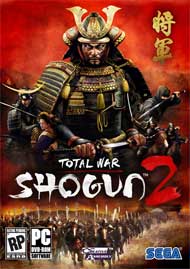Declaring Total War on Mediocrity
The Total War community has been waiting with bated breath for Shogun 2. On one hand, the new game continues the tale of the franchise’s well-regarded first entry. On the other, its developer, Creative Assembly, has been taking risks with the series of late, and a vocal minority of fans have disliked the results, especially Empire and Napoleon. The big question: Is Shogun 2 a return to form, or yet another title that will divide the Total War faithful?
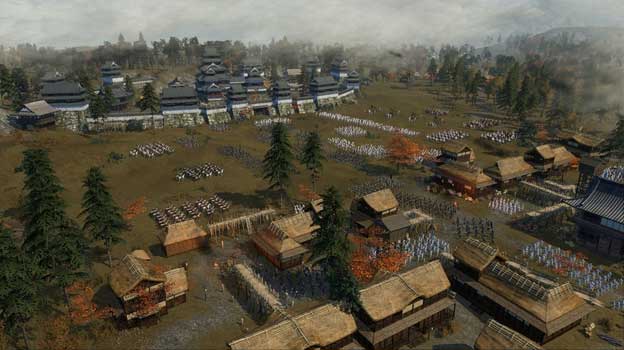
It is most definitely a return to form. In Shogun 2, the map is once again tight and focused, the setting is once again Japan, and yet the gameplay loses none of the staggering complexity it’s built up over the years. For gamers who love figuring out how strategy games work — from the best resource-management techniques to the tiny nuances of the AI’s battle strategy — Shogun 2 is a must-buy.
Like all Total War games, Shogun 2 has a two-tiered gameplay model. The main tier is a turn-based strategy game something like Civilization IV. You start out in the aftermath of the Onin War as one faction among many, and your goal is to take over Japan. You have to make the most of your resources, put your cities to work creating military units, combine those units into armies, engage in diplomacy with rival powers, and even set tax rates that balance revenue-raising with citizen-pleasing. Special agents, including ninjas and geishas, return from the first Shogun; you can send them behind enemy lines to wreak all kinds of havoc. Your units level up with use.
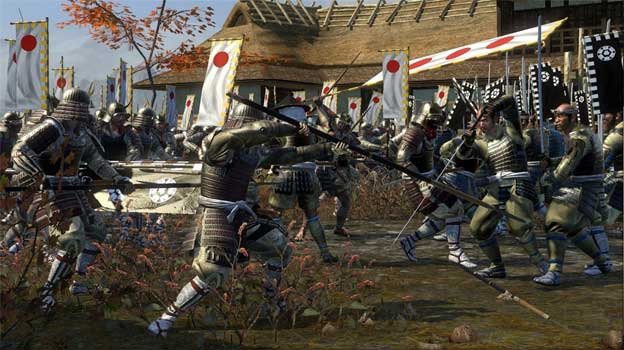
Unlike in Civilization IV, however, in Shogun 2 you can’t just create a “stack of doom,” tell it to attack the enemy, and be done with it. Whenever two armies meet on the battlefield, you’re given the option of controlling the events in real time — which, in addition to being fun, lets you turn the tables with clever strategy if you’re out-gunned. During battles, you’ll have to give each unit very specific instructions, from what direction to face, to what formation to stand in, to when to attack, to how to use its special abilities. (Archers, for example, can be set to “skirmish,” in which case they shoot enemies at range, and then retreat when the bad guys get close.) The interface is fairly simple, and the various difficulty levels provide a well-balanced challenge for most gamers, but this will still be a bit too complicated for beginners.
Critics of recent Total War games will be glad to hear that the AI has seen some dramatic improvements. Your enemies’ strategy will be random enough that you can never tell what’s coming next, and they’re quite able to surprise you in both gameplay tiers. If you leave a coastal city open to attack, a naval unit will stop by to invade; if you leave a flank unguarded in battle, the enemy will find a way to sneak through. Interestingly, once you start to gain steam in the campaign, the existing shogun will instruct all of the remaining clans to break their alliances and attack you at once, which seriously interrupts your momentum.
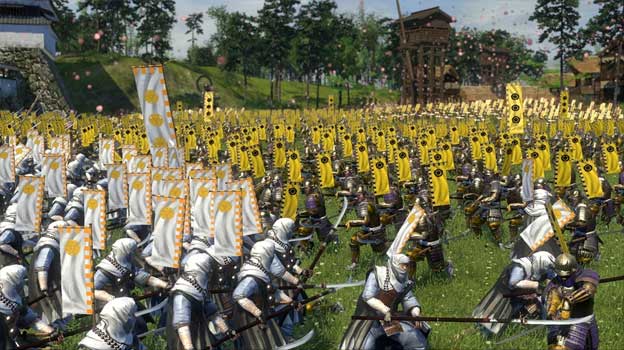
There are countless smaller systems at work, too. If a unit runs too much in battle, it gets fatigued; if it loses too much ground to an enemy unit and you don’t back it up, its morale crumbles and soldiers start to desert. If you break alliances, your honor declines, the other clans lose respect for you, and dealings with them become a lot harder. Instead of pursuing war all the time, you can accomplish various missions and earn benefits to use later. There’s a tech tree divided between military power (Bushido) and civic development (Chi). You can make nice with the West, Christianize, and get access to gunpowder, but your fellow clans might not like that so much. In other words, virtually every decision you make will have several levels of risk and reward.
Story-wise, the game is pretty simple: It’s a bit after the first Shogun game — still the Sengoku period in Japan — but the ruling class has lost its grip on the country, and the people are once again dividing themselves into mutually antagonistic clans. Your goal, as the leader of one such clan, is to become the next shogun, a feat that requires conquering a given number of other provinces, in addition to the capital, Kyoto.
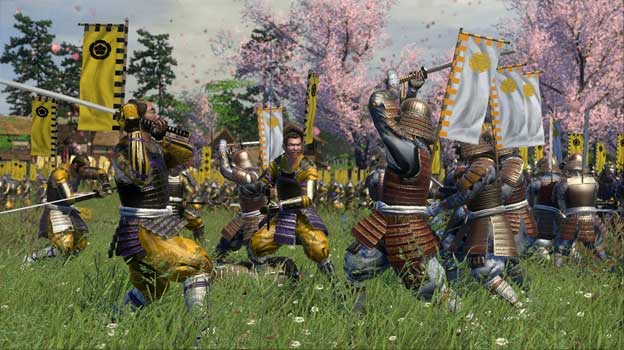
Shogun 2 also features a rather involved multiplayer experience, one that rivals the single-player game in complexity. After designing a character, you set out to gain experience points, which allow you to develop more types of units and conquer more land. You can play standard head-to-head matches, or opt for cooperative play (in which one player leads on the Civilization-style map, while the others lead troops during the real-time battles). As your units gain experience, they become more expensive to use, which helps to balance fights between unevenly matched opponents (the matchmaking system also does a good job by itself). You even have a set of skill trees in multiplayer, meaning that your decisions in one multiplayer match can have long-lasting consequences.
The graphics here are some of the best the strategy genre has to offer. We experienced some screen tearing during cutscenes, but aside from that, this is a visually impressive title. The cutscenes are detailed and action-packed, and during the game, the landscapes, city structures, and water all look realistic. The units in particular are a treat to look at — pay close attention, and you’ll notice that each individual member of the unit looks a little different. Even the menus are designed to fit the game’s location and period.
The sound is of a similarly high quality. Foreign accents in games often sound unconvincing, or even borderline racist, but the Japanese-inflected English you hear in Shogun 2 is respectful and well-acted. The music and sound effects are visceral and period-appropriate.
Of course, as with any strategy game, it will take a few months for players to exploit all of Shogun 2’s vulnerabilities and see how bad they are. But in its early hours, at least, this is a solidly constructed, brilliantly conceptualized strategy game that forces you to make meaningful decisions almost constantly. If you’ve been wondering when Total War would finally return to its roots and fix many of its longtime problems, your wait is over. Shogun 2 does both.
RATING OUT OF 5 RATING DESCRIPTION 4.6 Graphics
They’re remarkably detailed, especially for a strategy game. 4.2 Control
There’s too much going on for a beginner to grasp it quickly, but the menus are easy to navigate once you get the hang of it. 4.4 Music / Sound FX / Voice Acting
The voice work is excellent, and the music and sound effects work well. 4.6 Play Value
You have to micromanage every aspect of an empire through a long and grueling campaign, and there’s multiplayer to boot. 4.4 Overall Rating – Great
Not an average. See Rating legend below for a final score breakdown.
| Review Rating Legend | |||
|---|---|---|---|
| 0.1 – 1.9 = Avoid | 2.5 – 2.9 = Average | 3.5 – 3.9 = Good | 4.5 – 4.9 = Must Buy |
| 2.0 – 2.4 = Poor | 3.0 – 3.4 = Fair | 4.0 – 4.4 = Great | 5.0 = The Best |
Game Features:
